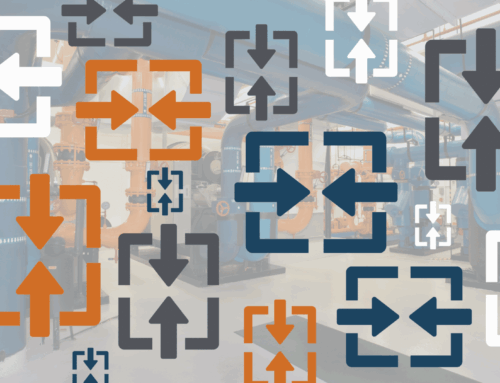You can hire the best people in the country or in the world. But if you don’t provide your members with the proper tools to do their job, you severely limit their capacity and productivity. Software has become an important tool that all members of an organization use. There are plenty of out-of-the-box solutions that an organization would not consider developing on their own (like word processing software). But when analyzing and visualizing equipment data, many organizations are left to wonder: should we build it or should we buy it?
Unfortunately, there is not one single answer for every organization. It will depend on a multitude of factors that are specific to your organization.
Before Beginning Your Predictive Analytics Journey
Before you determine whether you should develop in-house or purchase data analytics and visualizations software, answer these three questions to define your scope:
- What pain point are you trying to resolve?
- What do you currently have at your disposal?
Consider involving different layers of the organization in the conversation to answer these questions. Measure twice and cut once applies. Therefore, by fully understanding the pain points you are trying to solve and the varying perspectives and needs of the organization, you will reduce the chance of discovering a huge gap further down the line. Don’t worry, predictive analytics software developed internally or externally is not built in stone. It will continue to change and grow.
Consideration 1: Magnitude
Don’t reinvent the wheel. If all you need is an Excel macro or report template, you don’t need to purchase a software suite for one feature that addresses your problem. Use internal resources to develop or review community boards to see how others have overcome internally. For larger projects, consider leveraging software providers.
Also, don’t be afraid to speak with software providers during your discovery phase. They do this for a living and speak with other end users who may face some of the same issues you do. The software provider should be happy to share some of their expertise without a purchase order. Just don’t ask what their proprietary algorithms are!
Consideration 2: Audience
Different audiences have different requirements. If the software and information will only be seen by members of your organization, it may be okay to have a simple user interface designed internally. Don’t confuse simple with easy-to develop. Simplicity requires a significant amount of work and thought. Any software provider worth their weight should have simplicity as one of their core tenets.
On the other hand, if the information or interface will be outward facing, you may want to spend more time and resources for a beautifully-designed package. Again, making predictive analytics tools both beautifully-designed and easy-to-use is not as easy as it sounds. Consider partnering with a software provider to leverage their expertise and focus.
Consideration 3: Resources
Do you have internal members who are capable of developing in-house? If not, you will need to hire additional members to develop the software. Also, keep in mind that development is not a one-time thing. You will need to continue to develop and improve the software as your processes and operation change and as technology develops.
If yes, the answer to develop in-house is not an immediate yes. Do they also have the capacity? There will always be trade-off costs. Having members focus on development will take their time and energy away from other activities. If there are other responsibilities that are a priority and you have the additional budget to purchase from outside, consider it!
Consideration 4: Time
What level of urgency is solving this pain for you? Development takes time. No matter how good your people are, bugs will happen and require more time. When evaluating in-house development, consider not only the time for development, but also testing, maintenance, and upgrades/changes.
In addition, if you decide to purchase, don’t underestimate the time you will need to ensure the maintenance of the software. Just because you won’t be changing code doesn’t mean that there won’t be updates or maintenance of the hardware or information stored within it. When evaluating software, fully understand what it requires from your people to keep it up and running. There is nothing worse than buying software and then having to hire a person or an entire team to keep that software running and working in your system.
Consideration 4: Customization
Who knows your operations, organization, and systems better than you? By developing software in-house, you can customize it based on your specific needs and structure. If you have particular features or structures that are not adequately addressed by existing software, in-house development may be a good option.
Purchasing predictive analytics software does not mean you are without customizations. Search for software providers that don’t see you as another number but are willing to improve their software and your experience by adding additional features. We have seen that requirements of one customer are wants and desires for another. Leverage their expertise from other industries or other customers. For in-house development, a great way to do this is through conferences and networking. When purchasing software, you get the added benefit of a built-in R&D team.
Get in touch with us today so we can help you break through the limitations tomorrow. And don’t forget to check out our LinkedIn for future posts!






